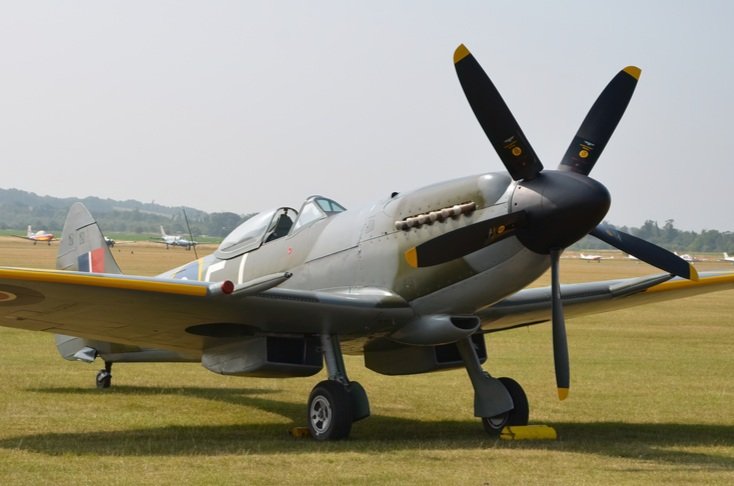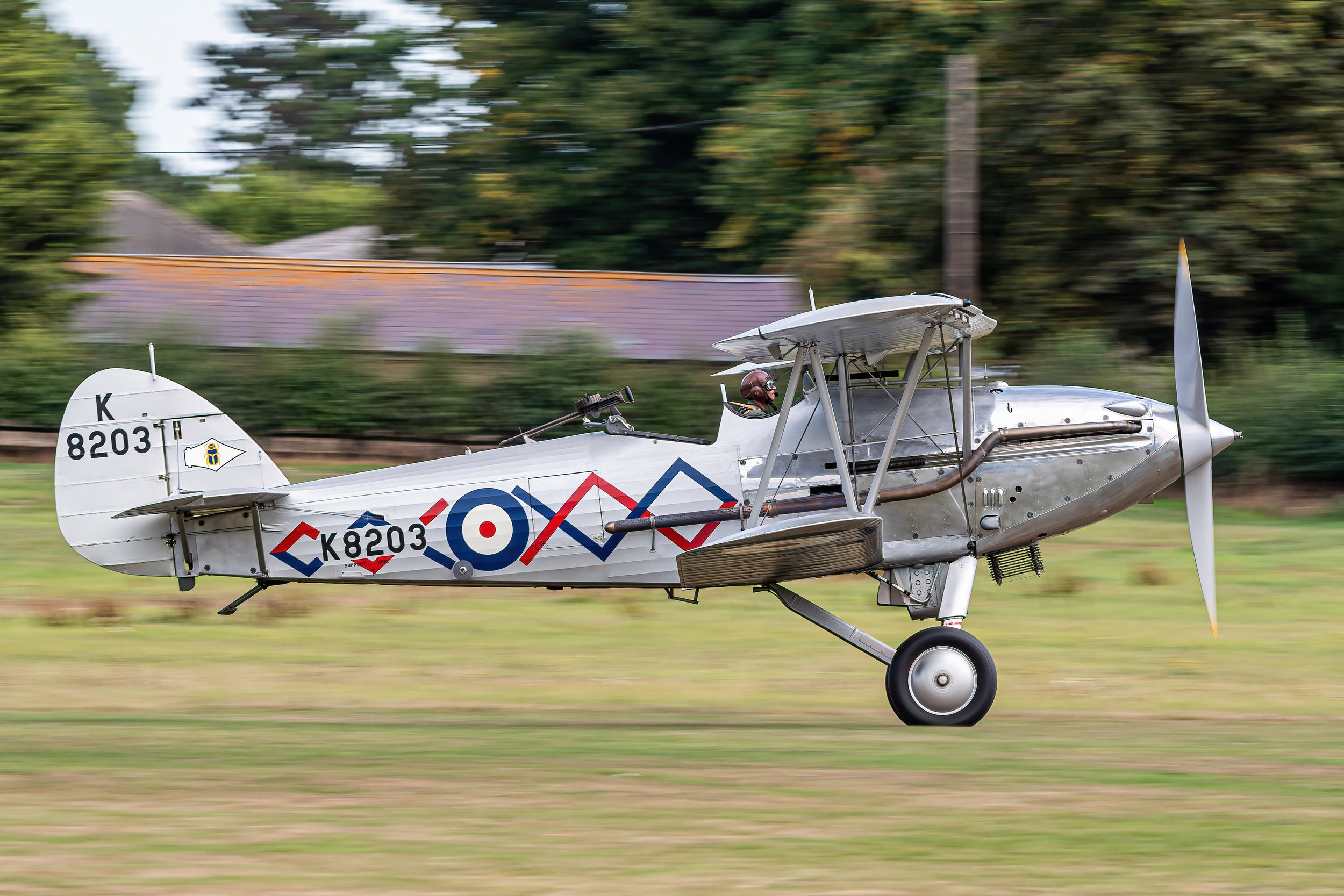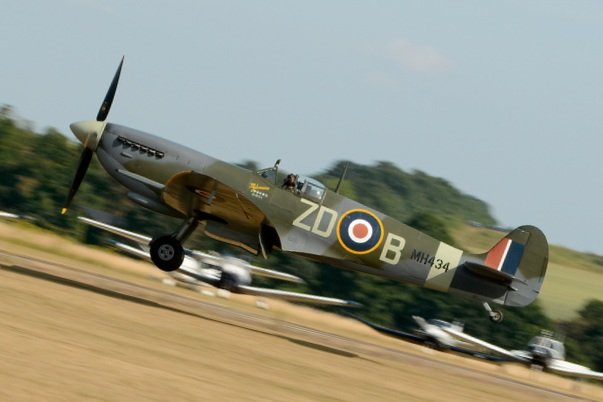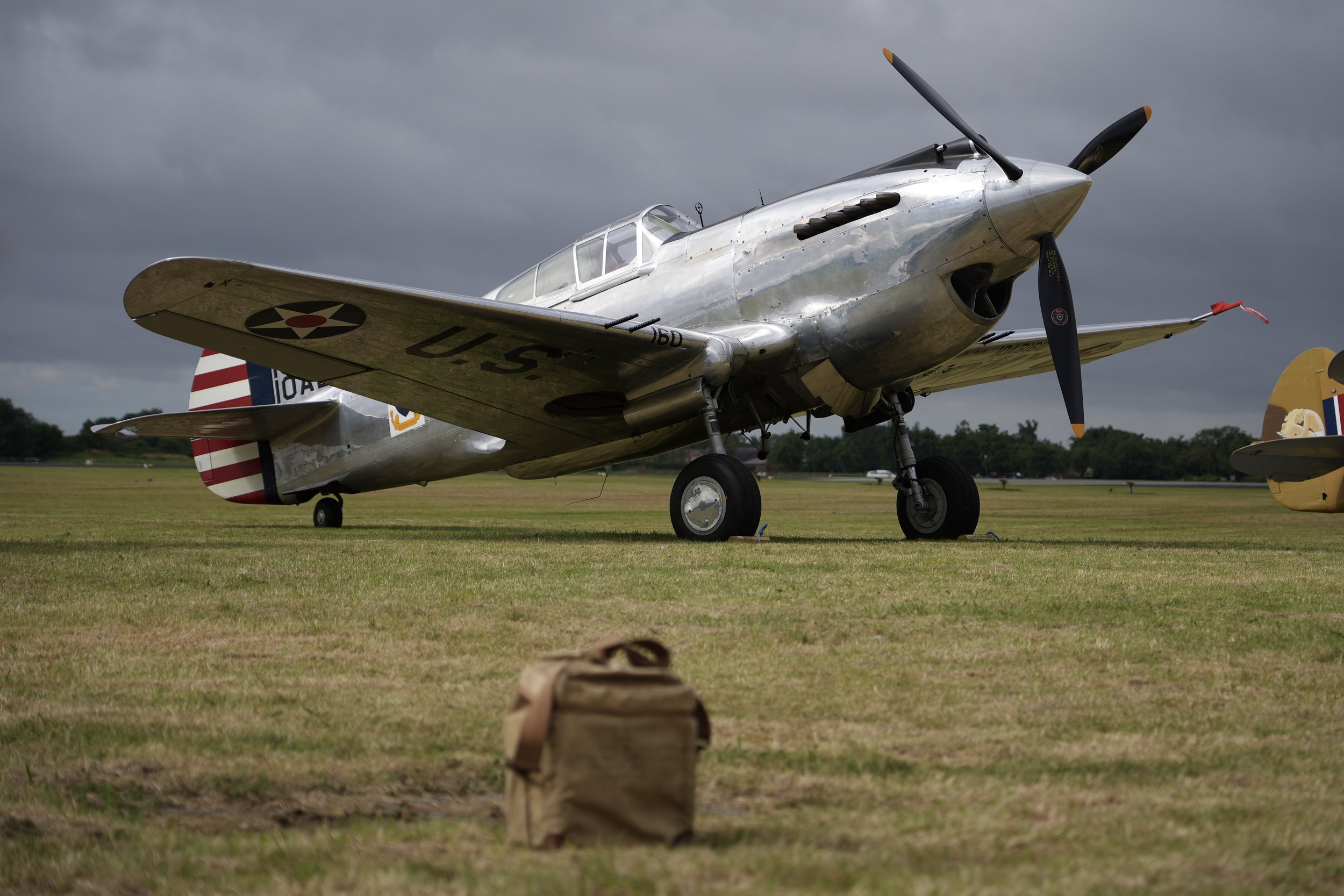DC-3 N147DC
Year built
1942
Aircraft
C-47A-75-DL
Base
Dunsfold Airport
Constructed in 1942 at the Douglas plant in Long Beach California she first flew in 1943 and was taken on strength with the United States Army Air Force (USAAF) where she flew with the 79th TSC out of Membury during D-day as 42-1000884.
In 1944 she was delivered to RAF at Netheravon as TS423 and shortly before the end of the war transferred to 436 Squadron to the RACF at Down Ampney.
Heavy Glider Unit Took part in Arnhem and the D Day landings. She was also one of the very few glider (snatchers) recovery aircraft with the RAF this was a difficult and dangerous job. She also helped drop supplies during the Berlin airlift.
After the war, she went to Short Brothers, Scottish Aviation, Marshalls and Ferranti. At Ferranti, she acquired a non-standard nose. Inside this unique nose, which singled her out from her eleven thousand sisters, Ferranti fitted air pass radar for the Lightning fighter and hydraulically operated gun turret. Underneath she acquired Sonar buoy dropping the equipment.
In 1969, with a surprisingly low number of hours on her airframe (around 3000 hours) TS 423 was delivered to the Ministry of Technology at RAE West Freugh and 10 years later in 1979, she was sold to Michael Woodley/Aviation Services where she received a civil registration G-DAKS.
In 1980 the Dakota was sold to Aces High Limited and received a new colour scheme with a false registration G-AGHY painted for TV Series Airline.
In 1983 she received the RAF Colour scheme with D-Day markings representing YS-L, KG374.
In 1998 she received a new civil registration N147DC it has to this day.
| Back to Top |
Douglas DC-3
The Douglas DC-3 was a revolutionary propeller-driven airliner that significantly impacted the airline industry during the 1930s and 1940s, as well as during World War II. It was developed by the Douglas Aircraft Company as an improved version of the Douglas DC-2, with a larger and more comfortable 14-bed sleeper, which helped to set a new standard in air travel.
The aircraft is a low-wing metal monoplane with conventional landing gear, powered by two radial piston engines that produce 1,000-1,200 hp (750-890 kW). Although most DC-3s that are still flying today use Pratt & Whitney R-1830 Twin Wasp engines, many of the planes originally built for civil service were equipped with the Wright R-1820 Cyclone engine. This engine was less powerful than the Twin Wasp, but it was more economical and reliable.
The DC-3 was a notable improvement in many ways compared to previous aircraft. It was faster, more reliable, and had a longer range, providing passengers with greater comfort. Prior to the war, it pioneered many air travel routes and was capable of crossing the continental US from New York to Los Angeles in just 18 hours with only three stops. Additionally, it was one of the first airliners to efficiently carry only passengers without relying on mail subsidies.
During the war, the DC-3 played a vital role as a military transport aircraft. It was used extensively by the United States Army Air Forces (USAAF) and the Royal Air Force (RAF) for a wide range of missions, including paratroop drops, aerial resupply, and medical evacuation. Military versions of the DC-3, including the C-47 Skytrain (known as the Dakota in British RAF service), as well as Soviet- and Japanese-built versions, brought total production to over 16,000.
Following the war, the market was flooded with surplus transport aircraft, and the DC-3 was no longer competitive due to its size and speed. It was replaced on main routes by more advanced types, such as the Douglas DC-4 and Lockheed Constellation, but the design proved to be adaptable and useful on less glamorous routes. Many DC-3s were converted into cargo planes, and some were modified for use as executive transports and aerial survey platforms.
Civil DC-3 production was discontinued in 1942, with a total of 607 aircraft produced. However, the DC-3 continued to serve in a variety of roles in many countries around the world. Even today, many DC-3s continue to fly in a variety of niche roles, with an estimated 2,000 still in operation in 2013 and over 300 still in service as of 2017. The aircraft's durability, versatility, and reliability make it a popular choice for operators who require a dependable workhorse that can operate from short runways in remote locations.
| Back to Top |




| Back to Top |

































